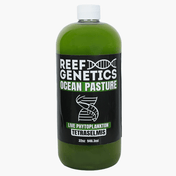Introduction to Saltwater Coral Care
Creating and maintaining a thriving saltwater coral reef aquarium is both a rewarding and challenging hobby. For beginners, understanding the fundamentals of coral care is essential to ensure a healthy and vibrant marine ecosystem. This guide provides comprehensive insights and practical tips to help you embark on your coral reef journey with confidence.
Understanding Saltwater Corals
What are Saltwater Corals?
Saltwater corals are marine invertebrates that belong to the phylum Cnidaria. They typically form colonies composed of numerous genetically identical polyps. These polyps secrete calcium carbonate to build a hard skeleton, which contributes to the structure of coral reefs. Corals play a crucial role in marine ecosystems by providing habitat and protection for a diverse range of marine species.
Different Types of Saltwater Corals
Corals can be broadly categorized into two types: soft corals and hard corals. Hard corals, also known as stony corals, are further divided into small polyp stony (SPS) and large polyp stony (LPS) corals. Each type has unique care requirements and characteristics:
- Soft Corals: These corals lack a rigid skeleton and are often easier to care for, making them ideal for beginners. Examples include leather corals, zoanthids, and mushroom corals.
- Hard Corals (SPS and LPS): SPS corals have small polyps and require high light and stable water conditions. LPS corals have larger polyps and are generally more forgiving. Examples of SPS corals include Acropora and Montipora, while LPS corals include Euphyllia and Favia.
Importance of Saltwater Corals in Marine Ecosystems
Corals are vital to marine ecosystems, providing habitat and shelter for many marine organisms. They also protect coastlines from erosion and contribute to the global carbon cycle. Understanding the ecological significance of corals underscores the importance of their care and conservation.
Setting Up Your Coral Reef Aquarium
Choosing the Right Aquarium
Selecting the appropriate aquarium is the first step in setting up a coral reef tank. Beginners should consider the following factors:
- Size: A larger tank (20 gallons or more) is generally easier to maintain and offers more stable water parameters.
- Shape: Rectangular tanks provide better surface area for gas exchange and more space for aquascaping.
Essential Equipment for Coral Care
To maintain a healthy coral reef aquarium, you'll need the following equipment:
- Filtration System: A high-quality filtration system is crucial for maintaining water quality. Options include canister filters, sump systems, rollermats, and protein skimmers.
- Heater: A reliable heater maintains a stable water temperature, typically between 75-80°F.
- Lighting: Appropriate lighting is essential for coral growth. LED lights are popular due to their efficiency and spectrum options.
- Powerheads: These create water flow, which is vital for coral health and nutrient distribution.
- Test Kits: Regular testing of water parameters ensures a stable environment for your corals.
Selecting the Right Location for Your Aquarium
Place your aquarium in a location where it will receive minimal direct sunlight to avoid algae growth and temperature fluctuations. Ensure the stand is sturdy enough to support the weight of the filled tank and provides easy access for maintenance.Water Quality and Parameters
Importance of Water Quality
Maintaining excellent water quality is essential for coral health. Corals are sensitive to changes in water parameters, and poor water quality can lead to stress, disease, and death.
Ideal Water Parameters for Corals
The key water parameters to monitor include:
- Salinity: Maintain a salinity level of 1.023-1.025 specific gravity.
- Temperature: Keep the water temperature between 75-80°F.
- pH: Maintain a pH level of 8.1-8.4.
- Alkalinity: Aim for an alkalinity of 8-12 dKH.
- Calcium: Keep calcium levels between 400-450 ppm.
- Magnesium: Maintain magnesium levels between 1250-1350 ppm.
- Nitrate and Phosphate: Keep nitrate levels below 10 ppm and phosphate levels below 0.03 ppm.
Testing and Maintaining Water Quality
Regularly test your water parameters using reliable test kits. Perform partial water changes (10-20% of the tank volume) every 1-2 weeks to maintain water quality. Use a high-quality salt mix and purified water to prepare the replacement water.Lighting Requirements for Corals
Types of Aquarium Lighting
Various types of lighting are available for coral reef aquariums, including:
- LED Lights: Energy-efficient, customizable spectrum, and long lifespan.
- T5 Fluorescent Lights: Good spectrum coverage but require bulb replacement every 9-12 months.
- Metal Halide Lights: High-intensity lighting suitable for SPS corals but generate more heat and consume more energy.
Best Lighting for Different Coral Types
Different corals have varying lighting needs:
- SPS Corals: Require high-intensity lighting, typically 200-400 PAR.
- LPS Corals: Thrive under moderate lighting, around 50-150 PAR.
- Soft Corals: Can tolerate lower light levels, around 30-100 PAR.
Setting Up Lighting Timers
Use lighting timers to mimic natural daylight cycles, typically 8-10 hours of light per day. Gradually acclimate new corals to the light intensity to avoid bleaching.
Feeding Your Corals
Understanding Coral Nutrition
Corals obtain nutrients through photosynthesis, capturing plankton, and absorbing dissolved organic matter. Providing the right nutrition is crucial for their growth and coloration.
Types of Coral Foods
Various coral foods are available:
- Phytoplankton: Ideal for filter-feeding corals. The Reef Genetics line of phytoplanton provide the best strains of phyto for corals.
- Zooplankton: Suitable for LPS and some SPS corals. Polyplabs Reefroids are a great option for hobbyists tanks.
- Coral Supplements: Products like amino acids and trace elements enhance coral health.
Feeding Schedules and Techniques
Feed corals 2-3 times a week. Target feeding using a turkey baster or pipette ensures that the food reaches the corals directly, reducing waste and maintaining water quality.
Common Coral Diseases and Pests
Identifying Common Coral Diseases
Common coral diseases include:
- White Band Disease: Characterized by a white band of dead tissue.
- Brown Jelly Disease: Affects LPS corals, causing tissue to turn brown and jelly-like.
- RTN (Rapid Tissue Necrosis): Rapid loss of coral tissue, often affecting SPS corals.
Preventing Coral Diseases
Maintain stable water parameters, practice good hygiene, and quarantine new corals before adding them to your main tank to prevent disease outbreaks.
Treating Coral Pests and Diseases
Identify and treat pests such as nudibranchs, flatworms, and aiptasia using appropriate treatments like dips, manual removal, and biological controls.
Aquascaping for Coral Reefs
Designing Your Coral Layout
Designing your aquarium's layout involves creating a visually appealing and functional environment for your corals. Consider the following:
- Flow: Arrange rocks to create adequate water flow around corals.
- Lighting: Position corals based on their lighting needs.
- Accessibility: Ensure easy access for maintenance and coral placement.
Selecting Suitable Rocks and Substrates
Use live rock or reef-safe dry rock as the foundation of your aquascape. Choose a suitable substrate, such as sand or crushed coral, that matches the needs of your corals and other inhabitants.
Creating Hiding Spots and Flow Areas
Incorporate caves, overhangs, and open areas to provide hiding spots for fish and invertebrates and promote water circulation around the corals.
Adding Fish and Invertebrates
Best Fish for Coral Reef Tanks
Choose reef-safe fish that are compatible with corals, such as:
- Clownfish: Hardy and easy to care for.
- Gobies: Small and peaceful.
- Blennies: Helpful in controlling algae.
Compatible Invertebrates for Corals
Select invertebrates that benefit your coral reef, such as:
- Cleaner Shrimp: Help control pests.
- Snails: Keep the substrate clean.
- Hermit Crabs: Aid in algae control.
Introducing New Inhabitants Safely
Acclimate new fish and invertebrates slowly to avoid stress and ensure compatibility with existing tank inhabitants.
Routine Maintenance and Care
Daily, Weekly, and Monthly Maintenance Tasks
Regular maintenance is crucial for a healthy coral reef aquarium:
- Daily: Check equipment, feed fish and corals, and observe coral health.
- Weekly: Test water parameters, perform partial water changes, and clean the glass.
- Monthly: Inspect and clean equipment, replace filter media, and prune overgrown corals.
Monitoring Coral Health
Regularly observe corals for signs of stress, disease, or pests. Healthy corals will exhibit vibrant colors, open polyps, and growth.
Adjusting Care as Corals Grow
As corals grow, adjust lighting, flow, and feeding to meet their changing needs. Propagate or trim corals to manage space and prevent overcrowding.
Advanced Coral Care Tips
Propagating Corals
Propagating corals, or "fragging," involves cutting healthy coral sections to grow new colonies. Use sharp, sterile tools and place frags in suitable locations with adequate lighting and flow.
Managing Coral Growth and Space
Regularly prune and re-arrange corals to prevent competition and ensure all corals receive adequate light and flow. Monitor for aggressive corals that may overtake others.
Enhancing Coral Coloration
Enhance coral coloration by providing optimal lighting, stable water parameters, and a balanced diet rich in trace elements and amino acids.
FAQs
How do I start a saltwater coral reef tank?Begin by choosing a suitable tank size, setting up essential equipment, and ensuring proper water quality and lighting. Introduce live rock and substrate, then gradually add corals and fish.
What are the best corals for beginners?Beginner-friendly corals include soft corals like leather corals, zoanthids, and mushroom corals, and hardy LPS corals like frogspawn and hammer corals.
How often should I feed my corals?Feed your corals 1-3 times a week using a variety of coral foods to ensure balanced nutrition.
What is the ideal water temperature for corals?Maintain a stable water temperature between 75-80°F to ensure coral health and growth.
How can I prevent coral bleaching?Prevent coral bleaching by maintaining stable water parameters, avoiding sudden changes in lighting or temperature, and ensuring proper nutrition.
What should I do if my corals are dying?If your corals are dying, check water parameters, look for signs of disease or pests, and make necessary adjustments to lighting, flow, and feeding.
Conclusion
Caring for a saltwater coral reef aquarium requires dedication, knowledge, and attention to detail. By following this comprehensive guide, beginners can create a thriving coral ecosystem that brings the beauty and wonder of the ocean into their homes. Embrace the journey, and enjoy the rewards of a vibrant and healthy coral reef aquarium.


















